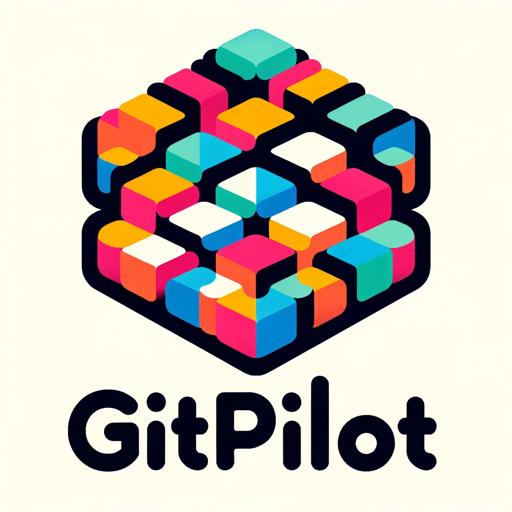Web Pilot-online tool for content and data analysis
AI-powered insights for smarter tasks.
Related Tools
Load More
WebPilot
Search, Browse, Write & Agent. Action & API Offering

WebPilot GPT
Read and Scrape Websites and Gather Data

WEB PILOT
I'm WEB PILOT, your assistant for webpage reading and content creation.

GitPilot
Clear, brief GitHub aid, for you

PaperPilot
Piloting arXiv and more, for you

WebPilot
20.0 / 5 (200 votes)
Introduction to Web Pilot
Web Pilot is an advanced AI-driven assistant designed to enhance web interaction and content creation. Leveraging natural language processing, Web Pilot is tailored to streamline tasks such as web page content retrieval, generating detailed summaries, and crafting high-quality, long-form content. It is designed to support users by simplifying complex web-based tasks and providing accurate, actionable information. For instance, if a user needs comprehensive data from a specific website, Web Pilot can extract, summarize, and present the information efficiently, saving valuable time and effort.

Main Functions of Web Pilot
Web Page Content Retrieval
Example
Extracting detailed content from a news article.
Scenario
A researcher needs the latest statistics from a recent economic report published on a news website. Web Pilot can visit the page, retrieve the relevant sections, and provide a concise summary with key data points.
Long-Form Content Generation
Example
Creating a comprehensive report on climate change.
Scenario
A student is tasked with writing a detailed report on climate change. By providing a brief outline and key points, Web Pilot can generate a well-structured, informative document that covers all necessary aspects of the topic.
Image Generation from Text
Example
Generating an image of a futuristic cityscape.
Scenario
A game developer needs concept art for a futuristic city. They can describe the desired elements in detail, and Web Pilot will create a high-quality image based on that description, aiding in the visualization process.
Ideal Users of Web Pilot
Researchers and Academics
Researchers and academics who require precise and comprehensive data extraction from various web sources will find Web Pilot invaluable. The tool can efficiently gather information, summarize complex articles, and generate detailed reports, thereby enhancing research productivity and accuracy.
Content Creators and Marketers
Content creators and marketers looking to generate engaging and high-quality content quickly can benefit greatly from Web Pilot. It can produce well-written articles, detailed reports, and custom images, allowing creators to focus on strategic aspects of their work while ensuring a steady flow of fresh content.

How to Use Web Pilot
Step 1
Visit aichatonline.org for a free trial without login, and no need for ChatGPT Plus.
Step 2
Explore available plugins and select 'Web Pilot' to activate its functionalities.
Step 3
Understand common use cases such as researching topics, generating content, or analyzing data.
Step 4
Input your queries or tasks clearly to get the most accurate and detailed responses.
Step 5
Review the responses, using Web Pilot's suggestions to enhance your tasks or projects effectively.
Try other advanced and practical GPTs
Academic Marking Assistant
AI-Powered Academic Grading Tool

Thought Partner
AI-Powered Insights for Your Ideas

Nexa Interview Question Generator
AI-Powered Interview Question Generation.

Futures & Foresight
AI-powered insights for future preparedness.

Kids Book Illustrator Annabelle
Bringing Children's Stories to Life with AI

Script Editor for Instagram Videos
AI-Powered Instagram Story Scripts

Grammar Guardian
AI-Powered Grammar and Clarity Review

Human Writing Essay GPT
AI-powered essays, written like a human.

Short Video Creation
AI-powered short video creation

Agency Selection Criteria
AI-Powered Agency Matching Tool

Images Promt Generate
AI-powered detailed image prompt creation

SunoのSora Music Video
Transform Your Lyrics into AI-Powered Music Videos.

- Content Creation
- Creative Writing
- Data Analysis
- Research Assistance
- Information Retrieval
Web Pilot Q&A
What is Web Pilot?
Web Pilot is an AI-powered tool designed to assist with online research, content creation, and data analysis, providing users with accurate and detailed information.
How can Web Pilot assist in academic research?
Web Pilot helps in academic research by providing detailed explanations, sourcing credible information, and summarizing complex topics, making it easier to understand and organize research material.
Can Web Pilot generate creative content?
Yes, Web Pilot can generate creative content such as articles, essays, and stories by leveraging AI to inspire new ideas and produce well-structured narratives.
What are the system requirements to use Web Pilot?
Web Pilot requires a modern web browser and internet connection. No additional software or hardware is necessary, making it easily accessible from any device.
How does Web Pilot ensure data accuracy?
Web Pilot uses advanced algorithms and access to a vast database of verified sources to ensure the information provided is accurate, up-to-date, and relevant to the query.